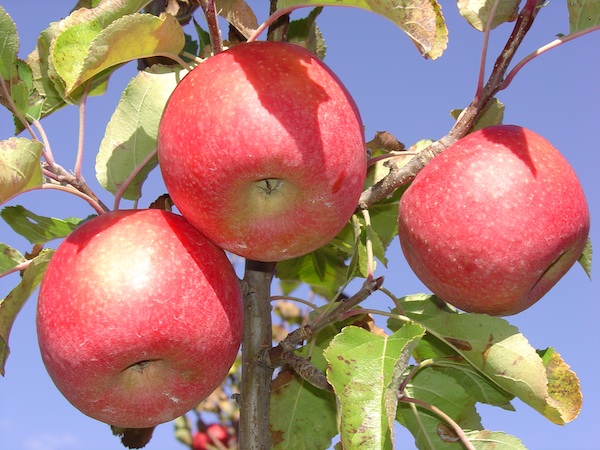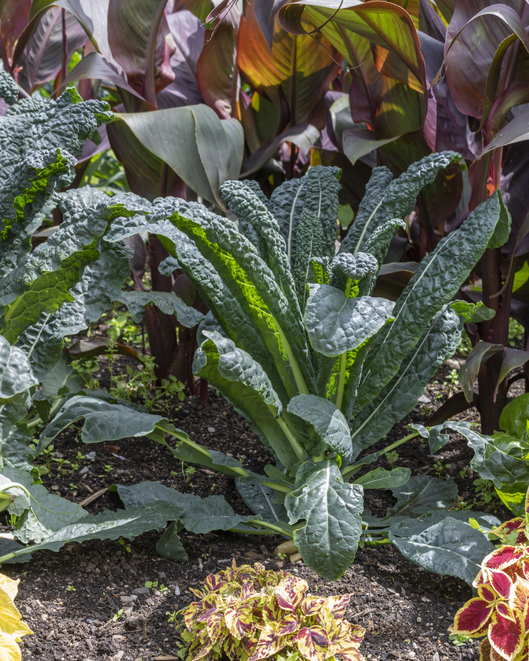If you have always wanted a home orchard, fall is the perfect time to plant one.
Small fruits like blueberries and blackberries are simple to grow, but tree fruits are more challenging. Begin with trees that are dormant and soil that has suitable moisture to establish the root system.
Location, location, location
First, select the location of your orchard. Fruit trees will grow and produce on a broad range of soil types, but the best yields and longest-lived trees are planted on loamy, well-drained soil.
Good internal drainage is essential. Do not plant trees on a site where water stands for more than an hour following a heavy rain. If a hardpan or poorly drained clay layer is present, the roots will develop poorly, and the plant may eventually die.
Avoid sites on the north side of tall trees or buildings. Fruit trees need a minimum of 6 hours of sunlight, but 8 to 10 hours is even better. Full sunlight is necessary for maximum tree vigor and fruit production.
Right variety for your area
Select varieties adapted to your soil and climatic conditions. Without sacrificing too much yield or quality, select varieties with insect and disease resistance.
Plant several varieties of the same kind of fruit that mature at different times to prolong your harvest. If you plan to freeze, can or preserve your crop, pick varieties that are best suited for those uses.
Cross-pollination is necessary for satisfactory fruit-set in many tree fruits. Plant at least two apple, pear, plum and blueberry varieties. Most peach, nectarine and plum varieties are sufficiently self-fruitful to set satisfactory crops.
Dwarf trees lend themselves perfectly to the home garden. They produce fruit earlier than standardized trees, occupy less space and can be more easily pruned and sprayed for pests.
Buy the best, get the best
Obtain the best nursery stock available. Buy only from reputable nursery operators who guarantee their plants to be true to name, of high quality and shipped correctly. Beware of “basement bargains.” High prices do not necessarily mean high quality, but good, well-grown nursery stock is not cheap.
If you mail-order trees, unpack the bundles immediately and inspect the trees. The roots and packing material should be moist and the bark should show no signs of withering. If not planted immediately, put the trees in refrigerated storage to hold them dormant or “heel” them in a trench of moist soil in a shady location.
One-year-old trees are usually preferred. A common mistake made by many homeowners is to select oversized or ready-to-bear nursery trees. Experience has shown that younger trees bear almost as soon, are easier to keep alive and develop into more healthy vigorous trees than do oversized stock. Older trees cost more to grow and are sold at higher prices, but are usually worth less.
Till and amend the soil
Prepare the soil the same way you prepare the soil in your vegetable garden. Take a soil sample to your local University of Georgia Extension office and follow the recommendations.
Deeply till the area to break up compacted soil. Place the tree so that the graft union is just above ground level. Begin filling the hole with pulverized or amended soil. Tamp backfill soil thoroughly to eliminate air pockets. Before the hole is completely filled, add 2 to 3 gallons of water to settle the soil.
At planting, the main shoot of fruit trees should be headed back to 30 inches above the ground. This procedure allows branches to form at desired levels, improves the strength of the tree and provides a balance between the top and the roots.
Do not apply fertilizer until the spring. Then use almost any type of fertilizer. Complete mixes used on lawns (i.e. 5-10-10) are satisfactory. Organic materials may be used, but it is important to provide the same quantities of plant nutrients.
Fruit trees can withstand long periods of drought, but irrigation is very beneficial during certain critical stages of growth. Bearing trees need irrigation during the six-week period prior to ripening. Young trees need irrigation during any dry period of the summer. Soaker hoses or drip irrigation are the best ways to efficiently irrigate fruit trees.
For more information on planting a home orchard, search the UGA Extension publication website at www.caes.uga.edu/publications/.








